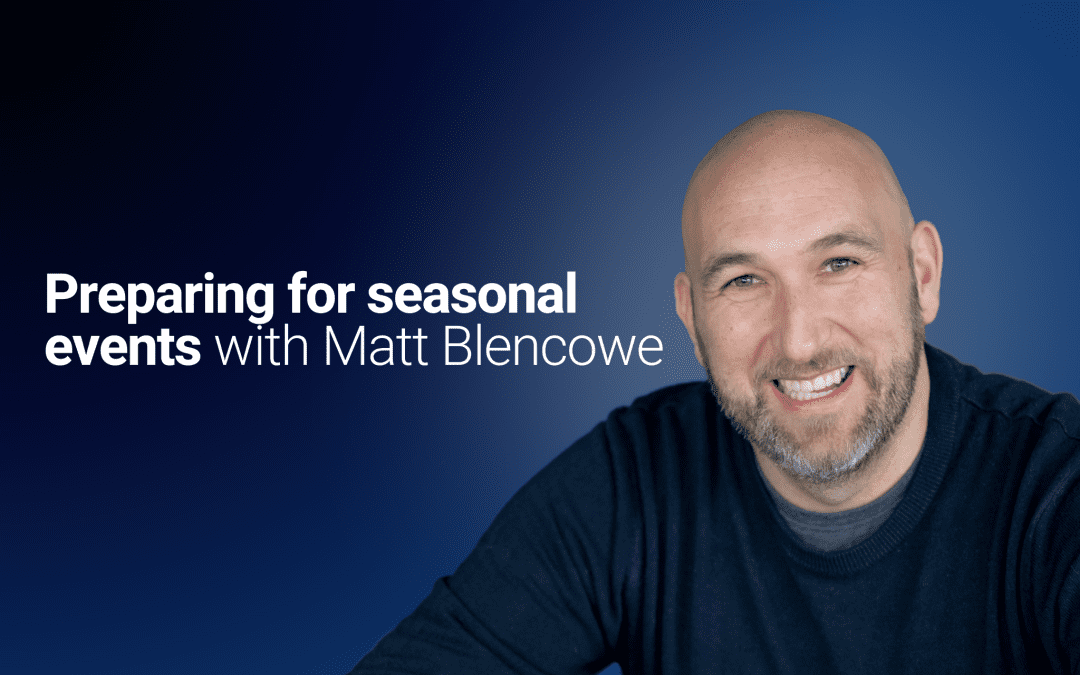
With thousands of brands fighting for the fleeting attention of shoppers, the highly saturated retail market presents a significant challenge for brands waiting to be picked over their competitors. To be a successful brand, your products must be noticeable and be situated in a prime share of shelf position where shoppers have no choice but to cast their gaze when shopping.
These days, consumers have an overwhelming number of choices to make: Not only do they have to consider what store to shop in, but they also have to make sure that they’re getting the very best prices and value too. YouGov recently reported that nearly half of UK adults (48%) would switch to a different brand within the same supermarket if their product of choice was unavailable. This shows us that brand loyalty may not be as important to value-seeking shoppers. It also highlights that now more than ever, brands have to ensure that their products are available, having a visual presence on the shop floor or on the shelves.
This is where the concept of ‘share of shelf’ (SOS) becomes a game-changer. Retailer share of shelf tracking and execution is not only about securing a spot in stores – instead, it’s about ensuring your products occupy prime real estate, giving them the visibility they need to drive sales. SOS is so important for brands to consider when recent studies have shown us that 70% of purchasing decisions are made at the point of sale. This means that performing well in these situations is make-or-break for modern brands and retailers.
In this blog post, we will explore what share of shelf means, why it matters so much for modern brands, how retail and store audits play a role, and how Tactical Solutions can help brands optimise their share of shelf execution for maximum impact.
If you’d like to see how we can help your brand for the better, please get in touch with our team today.
Share of Shelf: What Exactly Does It Mean?
Share of shelf (SOS) refers to the amount of space a brand’s products take up on a retail shelf compared to the total space available for a competitors’ products. It can be referred to as a key performance indicator (KPI), as it accurately measures both the physical space allotted to your brand and how effectively that space is used to attract consumer attention.
SOS is truly a science – especially when it comes to looking into the connection between consumer eye levels and shelf placement. One study into this specific topic concluded that ‘brands placed in higher shelves at eye level are evaluated better than brands placed at lower shelves, irrespective of the actual brand. Shoppers have learnt over time that retailers reserve the top position on shelves for renowned household brands’. This shows us that the placement of products has the potential to influence how a brand is perceived, also influencing shopper purchase decisions.
It’s not just about having products on the shelf, but about having the right placement, volume, and display. A higher SOS means your products are more likely to be noticed by shoppers, which can lead to increased sales and brand recognition. Retailers and brands will often work together to optimise SOS to ensure that products are accessible, attractive, and well-positioned to drive buying decisions.
Why is Improving Your Share of Shelf Presence So Important?

Achieving an optimal share of shelf is crucial for several reasons. For brands, it directly affects how easily consumers can find their products and influences their purchasing decisions. This plays a huge role when it comes to establishing brand trust and loyalty. Supporting this, Marketing Week discovered that shoppers are 70% more likely to remember a brand logo featured prominently on a product.
Improving your share of shelf presence means that your products are more visible, leading to higher sales and, ultimately, better market share.
Keep reading to discover some key reasons why improving your SOS presence should be a top priority for modern brands…
Monitor the Success of Your Products
When a brand consistently monitors its e-commerce share of shelf metrics, they can quickly identify which products are performing well or lagging behind. This may then lead to them upping their promotion on a specific product – or it may encourage them to re-think their entire shelf placement strategy. SOS enables brands to make data-driven decisions based on actual performance, rather than simple guesswork.
Brands may also track how much shelf space their product occupies compared to their competitors and its overall positioning. In this way, they can accurately gauge customer demand and identify trends to understand what products consumers are actually buying.
Monitoring SOS also allows brands to detect whether stock levels are consistently maintained or if stores are experiencing stockouts and stock shortages. Stock gaps can mean lost sales opportunities. However, ensuring products are consistently well-stocked and taking up the right amount of space improves their visibility and accessibility, which leads to better performance overall.
Discover New Opportunities for Growth
An effective share of shelf strategy may enable brands to identify untapped growth opportunities. For example, by examining KPI SOS data from different regions and retailers, brands may discover locations where their products are either performing better or are underrepresented. Addressing these gaps can potentially open new channels for growth – you can expand the availability of your products in areas with high consumer demand, giving you the tools to know where further promotion is needed.
Monitoring your in-store SOS data and technology also provides brands with the opportunity to level up on their competition, allowing them to deal with any issues quickly.
Push Your Underachievers
If you’re a brand with a plethora of products, it’s only natural that you’ll see a difference in the individual performance of each product. There may be some products you’re struggling to gain traction with, but it may be worth asking yourself a few questions before writing it off completely! By examining the share of shelf space for underperforming products, brands can identify which items are underachievers and determine why.
Is the product poorly positioned on the shelf? Is the display unappealing, or is the product simply not in demand?
Once identified, brands can take action by either improving the product’s shelf position, revising its field marketing strategy, or considering whether it’s worth keeping the item in stock. In some cases, underperforming products may benefit from engaging in-store promotions or repackaging processes to increase consumer interest.
Optimise New Product Launches
New product launches and developments provide brands with a significant amount of challenges. Just because a brand is confident a consumer will engage with their latest product, doesn’t mean that it will go as smoothly!
A successful product launch relies heavily on existing brand loyalty and also visual presentation, in terms of how well the product is positioned on the shelf. New product launches, in particular, benefit from having a strong share of shelf presence to attract attention from shoppers who may not yet be familiar with the brand or product. When launching a new product, it’s important to secure prime positioning and allocate enough shelf space to accommodate potential demand.
Monitoring and optimising SOS during the launch phase ensures that your product is visible and easily accessible to consumers. This creates a solid foundation for success right from the start, helping the product gain momentum and ultimately improving its long-term market performance.
Retail Audits and Store Audits: How Do They Work?

Achieving and maintaining optimal share of shelf involves constant monitoring, and this is where retail audits and store audits come into play. These audits are essential for providing real-time data on how well your products are performing in stores, helping you assess your SOS and take corrective action when needed. It’s common for brands to reach out to other businesses (like us) to carry out these audits, allowing them to focus on other pressing business matters.
Retail audits involve on-the-ground checks by field teams, who assess how well products are displayed, their stock levels, and whether your promotions are being executed properly. Store audits focus more on the physical layout of the store and how it aligns with the brand’s merchandising strategy. Both audit types help brands to measure and improve their shelf presence.
Here at Tactical Solutions, we work hand-in-hand with brands to ensure that their products are strategically positioned and effectively promoted, resulting in increased sales and stronger customer engagement. With our data-led approach, our incredible sales team pinpoints where performance isn’t acceptable, and then digs into the reasons why. We understand the market and we know that there isn’t a lot of space available. Most of what is available is being utilised around the clock already, so our experts will help our customers to identify the most promising opportunities that arise, ensuring they’re spending their money more intelligently.
Our approach is holistic, combining multiple strategies to give our customers a competitive edge. Every week, our team carries out over 3,700 data-driven store visits, delivering crucial insights into brand performance. By identifying strengths, addressing challenges, and uncovering new growth opportunities, we can create tailored, data-informed solutions that not only resolve issues – but also drive improved outcomes.
The Role of Big Data
The power of data analysis has revolutionised how brands monitor and optimise their share of shelf. These days, brands can get a clearer picture of how their products are performing at a granular level. For example, using data from retail compliance audits, brands can assess trends in product sales, pinpoint areas where SOS is lacking, and predict how changes in shelf placement could affect future sales.
Our team of experts utilise cutting-edge image recognition technology to monitor shelving with a quick snap of a photo. The images gathered are analysed by Reapp Vision to provide our customers with an instant view of their overall share of space at any one time. This means they have the ability to quickly see how they are performing against competitors, ensure retailer compliance and react to any stocking trends on a hyper-local, regional, or even national scale.
By leveraging big data, brands can make informed decisions to improve their in-store and digital share of shelf presence. Big data allows for quicker, more strategic decision-making, which can significantly enhance your performance in the marketplace.
Give Your Brand a Boost with Tactical Solutions
With the right strategy and a range of actionable insights, brands can ensure their products stand out in a crowded and competitive marketplace and continue to thrive. We know how much time and effort goes into the development and launch of a product, so it’s only fair that it gets the visibility it deserves to achieve retail success. It’s clear that optimising your share of shelf presence increases a brand’s chances of making sales and solidifies its position in the marketplace.
Tactical Solutions offers expert assistance in helping brands perfect their SOS execution, using our innovative share of shelf software and services to boost every brand that works with us. Through advanced retail and store audits, data analysis, and targeted strategies, we empower brands to optimise their shelf presence and improve overall performance. Whether it’s boosting the performance of underachievers, uncovering new opportunities for growth, or launching a new product successfully, we help brands of all sizes secure their place on the shelves and grow their market share.
Don’t just take our word for it, get in touch today and see how we can help your brand!




